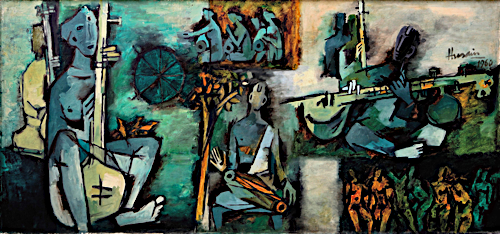
| ||||||
| Level 100 | ||||||
|
| ||||||
| Level 300 | ||||||
| ||||||
| Level 400 | ||||||
|
| ||||||
| History of Art | ||||||
| LS&A | ||||||
| University of Michigan | ||||||
| Back to the list of courses |
SPRING
Special Topics: Modern Art Across Global Time Zones

While modern and also contemporary art are widely understood to be global the concepts demanded for this understanding are still very much works in progress. This class will simultaneously explore the fascinating and variegated modern art movements that have taken place across Mexico to South Africa, India, Australia and China, and the kind of concepts required to think about these various modern arts in a truly globalized way.
Modern art in Europe and America arose in the context of robust art worlds, the Paris of the nineteenth century, the London/Berlin/Rome/New York of the twentieth and was very much about the texture of contemporary life in all its fascinations, along with the the relation between experience and the memory of it (impressionism). The project of critique began in the Paris of the nineteenth century with Eduard Manet, whose work was addressed to the art world in which he lived and worked. The avant-gardes of Europe eschewed the past and wished their experiments to lead the way to a utopian future undercutting the texture of the bourgeois life and art institutions of the day. Modern art in Mexico, India and other places arises by contrast at moments of nationalism and decolonization and has a profoundly different relation to the past, wishing to recover it in mythic form for the incipient nation. And it tends to arise in the absence of robust artworlds, making the project of their critique that so occupied a Manet literally inconceivable (since there was no art world to criticize). In a neo-colonial attitude global modernism was restricted from circulation in Europe and America (although there were exceptions), and branded imitative, second rate, the product of colonial mentalities incapable of genuinely modern innovation. Indeed the question of indigenous traditions in Africa and Australia which in their own ways sometimes make contact with and address modern life, but with no knowledge of European modernism challenges the idea that modern art across the globe arises purely through the diffusion of modernist styles from Europe throughout the world.
These issues will occupy the class, a class with a lecture/discussion format that will spend the first two weeks studying European modern and Avant-garde art to prepare for travel across time zones to Mexico, India, South Africa, Australia and China.
HISTART category for concentration distributions: 3. Early Modern, 4. Modern and Contemporary